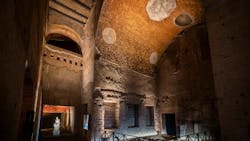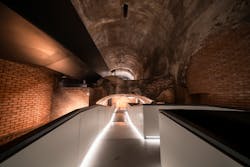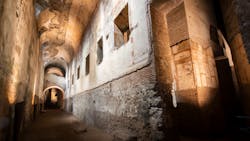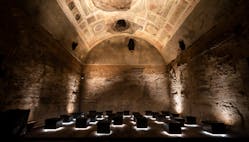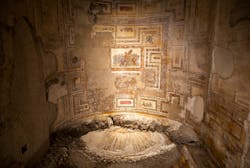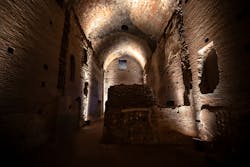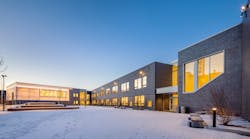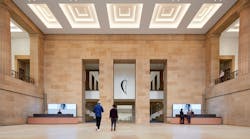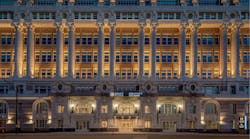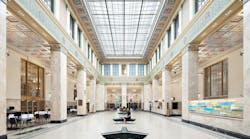Challenge: Of all the spaces that can be illuminated—educational, commercial, hospitality, historic—ancient ones are both wildly rare and incredibly challenging. This combination—scarce and difficult—makes them interesting stories to tell and this story begins with a little context.
After the Great Fire of Rome destroyed nearly two-thirds of the city in 64 AD, Emperor Nero built the Domus Aurea, also known as the Golden House. The ostentatious palace is considered one of Rome’s most extravagant constructions, even though it was never completed. Many of its ancient structures remained buried underground for centuries. It took several decades to rescue and restore the Golden House’s passages, vaults, and hundreds of rooms before they could be open to the public.
The latest restoration project by Stefano Boeri Architetti, created a new entrance and a pedestrian steel walkway that leads to what would have been Nero’s banquet room, the incredible Sala Ottagonale (Octagon Room), nearly 20-ft. below. The construct has granted unprecedented access to the Domus Aurea’s subterranean rooms, but in order for people to appreciate this ancient site, it needed to be illuminated.
ERCO was brought in to deliver the specially tailored, subterranean lighting solution. The manufacturer selected its Kona luminaires and Lightgap linear fittings outfitted with different color temperatures to meet the unique needs of this project.
The Kona is an IP65 exterior-rated, corrosion resistant projector. The projectors are highly adaptable and ideal for large-projection distances. The pan-and-tilt mounting plates offer precise alignment, while also being weather resistant—which is ideal for Domus Aurea’s harsh conditions.
Aesthetically, the team sought to recreate the sense that the archeological site was being explored by individuals bearing only torches or candles, just as they would have done when the Domus Aurea was first rediscovered in the 15th century. To achieve this feeling, and for conservation, light levels are kept low, and consistent warm light (2700K) was used throughout the Golden House, except where daylight or water effects were recreated. Although the new scheme has a much lower luminance level than the previous lighting system, the vastly improved light distribution now reaches the ceiling and has brought to light paintings that had not been seen before.
Throughout the project, fittings and color temperatures were adapted to their location. In a 130-meter-long corridor known as the Criptoporticus, golden-hued light that resembles torch light is emitted from floor-standing luminaires, while cooler light that resembles daylight is emitted from high-level window niches. In the Nymphaeum of Polyphemus, where water used to flow into a central basin, the team recaptured this sensation of water by filling the space with a very cool light (5000K).
“We had a constant and consistent relationship with ERCO. We shared all decisions, and this lead to an absolutely prolific collaboration that delivered an absolutely spectacular result,” said Stefano Borghini.
This article appeared in the May 2022 issue of Architectural SSL magazine.
